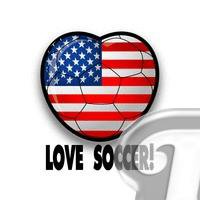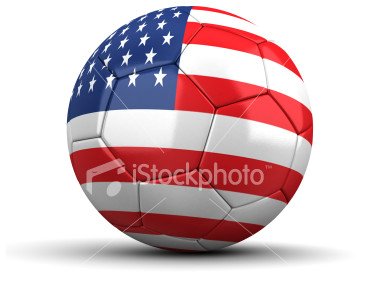An Overview of American Soccer History

The College Era, and Rules Consolidation, 1862-1875
The Working-Class and Immigrant Eras, 1875-1894
The First Dynasties, 1913-1921
The 1960's: The Birth of the American Soccer Renaissance
Outdoor soccer reaches a low: 1985
The Rebirth of Outdoor Soccer, 1988-1994
1994: The World Cup comes to America
From World Cup to Major League Soccer (1995-1996)

The Rebirth of Outdoor Soccer, 1988-1994
In 1988, a group of US Soccer veterans, led by Chuck Blazer and Clive Toye, established a new American Soccer League (the third one) with the aim of re-establishing professional soccer using a financially conservative approach. The American Soccer League, Salaries and expenses were kept low enough to prevent the salary wars that ruined previous leagues. The league operated with ten teams on the east coast of the US, extending from Boston to Miami. It fit in well with the rest of the pro soccer scene with a minimum of conflict- the season didn't overlap with the indoor season, allowing players to compete year around in both seasons, and it complemented the Western Soccer League (now Alliance) which was now well established throughout California and the rest of the west coast.
The ASL and the WSA provided critical in supplying talent to the National team until it could get its Team-in-Training program off the ground. Such stars of the 1990's as Steve Trittschuh, John Harkes, Brian Bliss, Peter Vermes, Bruce Murray, Tab Ramos, and Marcelo Balboa got their starts here. The leagues, recognizing their complementary nature wisely avoided destructive fights and agreed to a merger in 1990, with the dream of building themselves into the new 1st division league envisioned by the World Cup organizers. In fact, the league operated at a fairly impressive level with a number of future National Team members on their rosters, before they were taken away by the USSF Training Program. The two leagues played separate regular seasons in 1990, while under the aegis of the new parent organization, the American Professional Soccer League. This league was recognized by FIFA as the official 2nd division league for the United States, but celebrations were premature, as financial disasters almost led to the demise of the league after their first season. Nine teams survived to continue in 1991, which actually provided a long-term benefit, as the smaller league enjoyed a considerably higher level of play, with the weaker teams rooted out and weaker players relegated to the SISL.
Almost unnoticed during this renaissance was the decision in 1989 by the regional Sunbelt Indoor Soccer League, (Francisco Marcos's renamed SISL) to play an outdoor season. The outdoor league involved 8 teams who chose to supplement their indoor league with an outdoor season, to provide all-year playing opportunities. Little did people know that this humble beginning would grow to become the primary source of development for players in the US.
By the end of the 1989 season, it looked as though American soccer would grow as a low-level series of regional leagues. In fact, many people made the argument that the proper way to develop professional soccer in the United States was by building it up at the grassroots level, before building a 1st division league. In fact, a fairly well organized series of regional leagues existed, both for the indoor and outdoor games. On the indoor side, the SISL had 15 teams, extending from Houston, Texas to Denver, Colorado, to Phoenix, AZ, to Little Rock Arkansas. The AISA operated primarily in the Midwest, with the MISL playing nationwide, but primarily on the east and west coasts. For outdoor soccer, the ASL III operated along the east coast, the WSA along the west, and the SISL in the south and southwest. Proponents of this strategy felt that these leagues would grow, and eventually establish themselves as nationally prominent, possibly merging and forming a hierarchical divisional structure. Other people felt that this process would take too long, and possibly stagnate, and that a new league would have to be established from the onset as a full-fledged 1st division circuit, with promotion and budgets to match. These two schools of thought predominated the arguments and discussions when it came time to start the work of establishing the professional circuit that was promised to FIFA by the organizers of the 1994 World Cup. This was to become one of the major continuing battles between different factions at the USSF during the early 1990's.